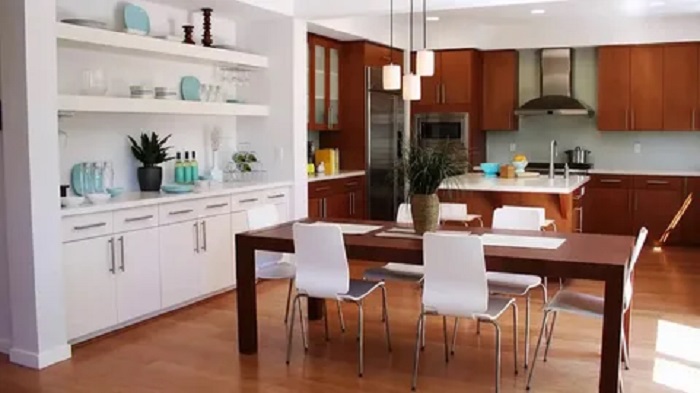The dining table is one of the main elements of the kitchen, creating comfortable conditions for family meals and meetings with friends. The right model will emphasize the style of the interior and ensure the functionality of the space.
The modern market offers a wide range of dining tables for the kitchen, differing in materials, shape, size and design. Before purchasing, it is important to consider not only the appearance, but also such parameters as the capacity and stability of the product.
To make the right choice, it is recommended to look at the products on https://ong.ng/ and compare different options. This will help you understand which models are best suited to your needs and interior features, as well as navigate the price range and technical specifications.
Overview of popular types of dining tables for the kitchen and their features
Let’s look at the most popular types of dining tables and their main features to help you make an informed choice when buying.
Main types of kitchen dining tables and their characteristics
- Solid wooden tablesThey have a classic design, are stable and highly durable. Most often they are made of solid wood, which gives them strength and natural beauty.
- Transformer tablesIdeal for small kitchens. They can be extended by unfolding or running goose feet, which allows you to vary the size depending on the need.
- Glass tablesCreate a feeling of lightness and visual expansion of space. Usually combined with metal or wooden elements, easy to clean.
- Modular systemsAllow you to form a dining area from several elements, which is convenient if necessary to change the configuration and size depending on the number of guests.
- MDF and chipboard tablesA more affordable option, with a wide range of decors and color solutions. Lightweight and practical to use, although it has less durability compared to natural wood.
Materials of manufacture: pros and cons of wood, metal, glass
When choosing a dining table for the kitchen, the material of its manufacture is of particular importance, as it affects the strength, appearance and stability of the furniture. Each material has its own advantages and disadvantages that must be taken into account when buying. Below are the main materials: wood, metal and glass.
The correct choice of material depends on preferences in interior style, operating features and budget. After reviewing the features of each option, you can make an informed choice that will last a long time and fit harmoniously into the kitchen space.
Wood: pros and cons
- Pros: Natural appearance, warmth and comfort, good strength with proper processing, possibility of restoration and restyling, wide range of wood species.
- Cons: Requires care (use of oils, protective agents), prone to damage from moisture and mechanical impacts, can deform or crack over time if stored improperly.
Wood is suitable for classic and rustic interior styles, creating a feeling of natural warmth. When choosing, it is important to consider the type of wood and its processing to increase durability.
Metal: pros and cons
- Pros: High strength and wear resistance, resistance to moisture and mechanical damage, easy to maintain, the ability to create modern and minimalist designs.
- Cons: May look cold and industrial, if used incorrectly – scratches and corrodes (if not treated with special means)
Metal tables are great for modern interiors, they are lightweight and durable. It is important to consider the quality of the finish and protective coatings for durability.
Glass: Pros and Cons
- Pros: Spectacular appearance, visually expands the space, easy to clean, creates a feeling of lightness and modernity.
- Cons: Easily scratched and damaged, requires care when using, may seem like a cold material, less resistant to mechanical damage.
Glass tables are suitable for modern kitchens, especially in combination with metal elements. The right choice of durable tempered glass is necessary to ensure safety and durability.

